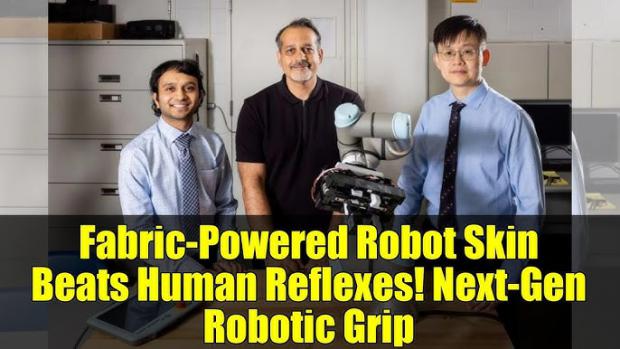
Breaking News
 3 Key Supreme Court Cases To Watch In Early 2026
3 Key Supreme Court Cases To Watch In Early 2026
 Forecast 2026: In the Vortex of the Whirl
Forecast 2026: In the Vortex of the Whirl
 Neocons Premature Celebration Over Protests in Iran
Neocons Premature Celebration Over Protests in Iran
 Tesla Dominated EVs For Years. BYD Just Left It In The Dust
Tesla Dominated EVs For Years. BYD Just Left It In The Dust
Top Tech News
 Kawasaki's four-legged robot-horse vehicle is going into production
Kawasaki's four-legged robot-horse vehicle is going into production
 The First Production All-Solid-State Battery Is Here, And It Promises 5-Minute Charging
The First Production All-Solid-State Battery Is Here, And It Promises 5-Minute Charging
 See inside the tech-topia cities billionaires are betting big on developing...
See inside the tech-topia cities billionaires are betting big on developing...
 Storage doesn't get much cheaper than this
Storage doesn't get much cheaper than this
 Laser weapons go mobile on US Army small vehicles
Laser weapons go mobile on US Army small vehicles
 EngineAI T800: Born to Disrupt! #EngineAI #robotics #newtechnology #newproduct
EngineAI T800: Born to Disrupt! #EngineAI #robotics #newtechnology #newproduct
 This Silicon Anode Breakthrough Could Mark A Turning Point For EV Batteries [Update]
This Silicon Anode Breakthrough Could Mark A Turning Point For EV Batteries [Update]
 Travel gadget promises to dry and iron your clothes – totally hands-free
Travel gadget promises to dry and iron your clothes – totally hands-free
 Perfect Aircrete, Kitchen Ingredients.
Perfect Aircrete, Kitchen Ingredients.
 Futuristic pixel-raising display lets you feel what's onscreen
Futuristic pixel-raising display lets you feel what's onscreen
'Robot skin' beats human reflexes, transforms grip with fabric-powered touch

Robots have become remarkably advanced, capable of executing complex tasks with impressive accuracy, speed, and coordination. Yet, despite these leaps, they often struggle with something fundamental like sensing and responding to touch.
That limitation may soon change.
A team from the University at Buffalo has developed an electronic textile (E-textile) that mimics how human skin senses pressure, slippage, and movement.



